Whether for athletic performance, reducing swelling or easing aches and pains, compression socks have soared in popularity. Studies and research have shown that these made in USA, are specially designed to bring benefits for people of all ages and activity levels.
With such a variety of socks that you’ll find, it’s clear that the pair of compression socks that’s right for you is a decision unique to you. This transformational compression gear can bring you the relief you need at the strength you need it and in the colors with unique fig-tree like patterns that looked good and match your style.
As you explore purchasing your first or fiftieth gear, we found the solution to help you find relief. Here we share the reason why compression socks are so independently amazing and the different types available that you can find. After that, we’ll get specific about what types are best overall for different life circumstances.

What are These About?
Compression socks are all about intentional pressure that helps support your blood flow. These are made in usa and they come in a variety of styles that looked good and levels that are designed to provide support and offering comfort where you need it most.
These are also not a new concept. In fact, they’ve been around for centuries. Yet through the years, technology has continued to advance on this type of fabrics and sewing techniques used. This innovation makes the ones you can find on shelves today have some great benefits at a price you can afford.
It may be surprising to hear that the most comfortable compression socks can dramatically reduce swelling and alleviate pain from complications such as deep vein thrombosis, all by just putting pressure on your legs. But the magic of these socks comes in allowing blood to flow through more freely.
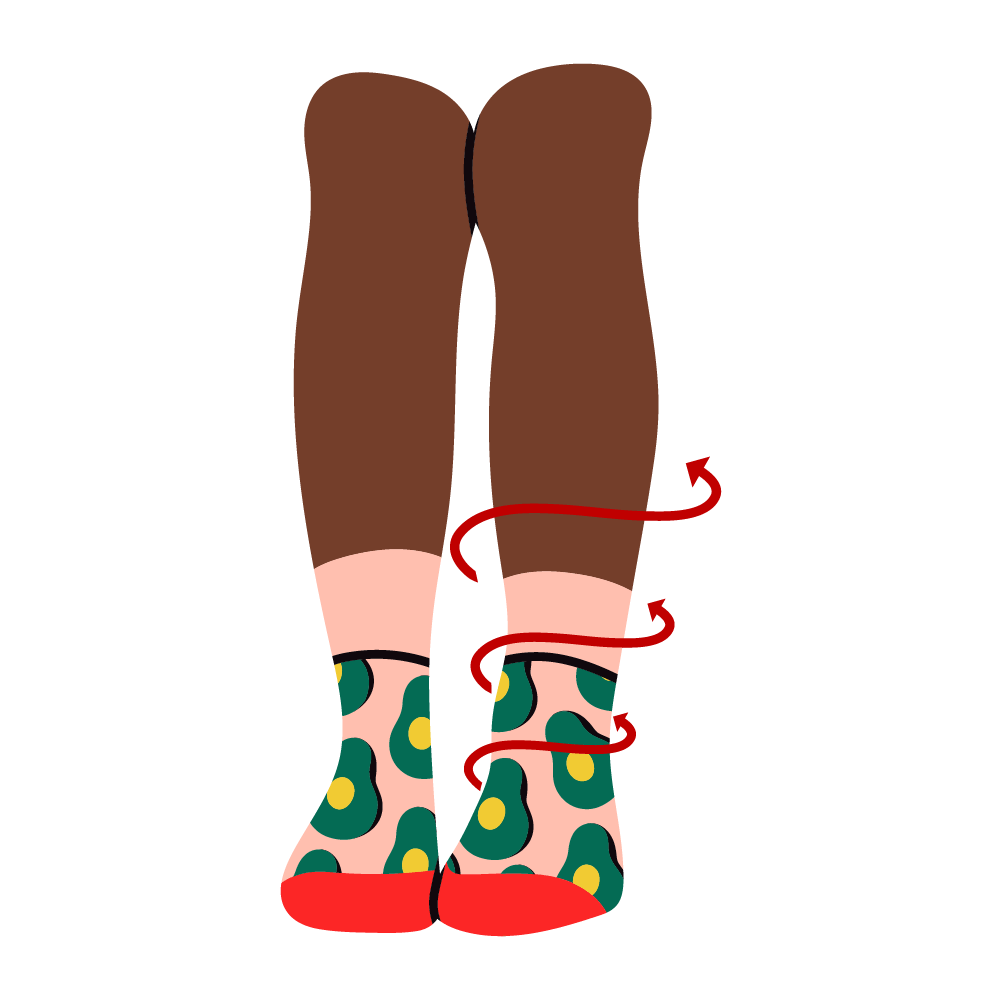
How Do These Work?
Like the name suggests, these socks compress the outside of the legs. This pressure encourages your blood in your feet and legs to flow upward through the deep veins in your legs back to your heart to receive more oxygen.
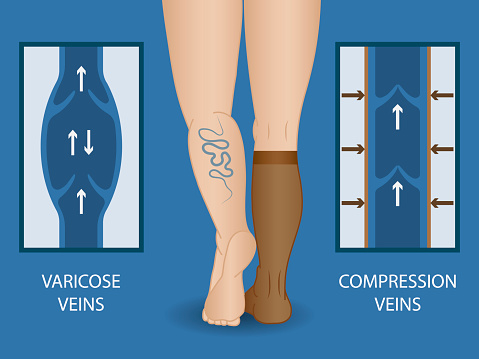
With compression socks, blood is able to flow more freely. They can help prevent clots and other vein-related issues. That pressure supports your entire circulation system and keeps you moving and living well.

What are the Benefits?
With their pressurized power, compression socks have a lot of benefits for a variety of scenarios and ages. With increased blood flow in your legs, you may feel more energized as oxygen can move freer. They can alleviate cramps and muscle soreness due to activity or inactivity. Whether used for prevention or treatment, compression socks can make a big difference.
When is the Best Time to Wear These?
Regardless of the pressure level of your compression socks, you shouldn’t wear compression socks all day every day. Because these socks are specifically designed to provide pressure on your legs to improve circulation, it may be overwhelming for your legs to be pressured at all times. It’s often suggested to take your compression socks off when you go to bed and put them back on when you get up the morning.
However, if you’re experiencing severe pain, complications such as deep vein thrombosis and are wearing compression socks as a treatment plan and advise from what the doctor says, be sure to ask for how long you should wear your socks during the day. It may be recommended that you wear your socks for the majority of the day or taking them off only periodically.
Types
With the variety of uses, there is also a variety of on this type of compression socks that are specified toward a particular purpose. When a compression sock is graduated, more pressure is placed at the ankles and then decreases as the sock moves up your legs. Graduated socks can be easier to wear for more mild or moderate cases depending on your need.
Another type of common compression sock is a sleeve, which does not cover your feet, only your leg from your ankle to your knee or thigh. This may help focus on your legs while keeping your feet freer.
In addition to the components of the socks, they also vary in the level of pressure that they put on your feet and legs. These levels are measured in mmHg, or millimeter of mercury, which evaluates the pressure of something. Typically, compression socks can be broken down into five main pressure level categories. These include mild, medium, firm, extra firm, and prescription extra firm levels.

Mild
- The first level, mild, has a compression level of 8-15 mmHg and is designed to provide relief for tired or aching legs. Because the pressure is somewhat minimal, they were worn more often or for just occasional needs.
- If you aren’t sure about wearing compression socks and just need something minimal to see if compression therapy is for you, you may want to consider beginning at this mild level.

Medium
- A medium level of compression ranges between 15-20 mmHg. If you know you need some sort of compression, this next step-up can make a difference in providing much-needed relief or preventing issues with varicose.
- This level of compression socks may also provide more of a difference in providing relief for swelling feet, ankles and legs. This level is fairly commonly worn and is great for first-time users as well.
Firm
- Firm levels of compression are typically in the 20-30 mmHg range. They manage to address issues of moderate to severe pains and help in managing other vein-related concerns, including deep vein thrombosis (DVT), edema, superficial thrombophlebitis and many others.

Extra Firm
- The next step, Extra Firm compression, has a pressure rating that ranges between 30-40 mmHg.
- This level is for those who suffer from severe pain and other more intense cases of vein-related concerns. It’s also used in post-surgical settings to help prevent varicose veins due to inactivity.

Prescription Extra Firm
- Compression socks that are prescription recommended by your doctor have pressure ranges between 40-50 mmHg. These are typically reserved for individuals with severe swelling and vein-related concerns.
- If you think you need prescription strength and support in finding the right match of compression socks, be sure to start a conversation and listen to what the doctor says about what resources and tools can help you find the relief you need.
What are TED Hose?
Thrombo-embolic deterrent (TED) hose are a specific kind of compression sock that has some great benefits. Also called anti-embolism stockings, these are specifically designed for some people who said that they are required to stay in bed after undergoing surgery. During this stretch when activity and movement are limited, these socks help to keep blood flowing through your legs and feet, offering comfort and proper circulation.


Footless Type
Footless compression socks are, you guessed it, socks that don’t come with the foot part. Also called sleeves, these compression stockings can help keep your feet free and unrestricted as the veins in your legs are pressured and empowered to allow blood to flow more freely.
Plus Size
People who said that they were struggling with their diet and health, plus size compression socks provide relief and comfort that takes into strong consideration calf and foot sizes. Having high-quality, but budget-friendly snug fit socks for your feet and legs can provide maximum comfort where you need it most. Often, you can find plus size compression socks both in stores and online, while others research using the measurement guides of your shoe size and leg size to help you choose the right match for you.


Knee High Length
Perhaps the most common height of sock for compression is knee-high. With graduated compression, they are highly effective in providing that needed relief while not feeling constricting or uncomfortable. The founder of knee-high socks from ComproGear came up with compression levels between 20-30 mmHg to provide instant relief. These slipping socks are united from specially designed wicking fabric such as rayon, nylon and spandex – which’s both sturdy and breathable.
Ankle Length
Ankle socks are shorter than typical socks as they stop right at the ankles rather than going all the way up to your knees or thighs. The focus of these socks is all on the ankles. Whether you wear them for preventative measures against vein-related conditions like varicose veins or DVT or you use them as recovery for twisted ankles or other injuries, ankle compression socks work.
Ankle socks studies and research have also shown to stabilize your muscles while wearing them and help you recover after a workout or injury.
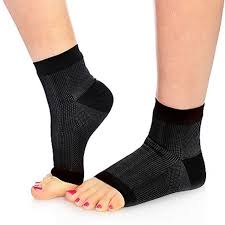

Thigh High Length
Thigh high compression socks provide relief and support for your legs above the knee. Most often, these styles are graduated pressure, which means the pressure decreases as the sock goes up your leg. These come in a variety of brands, the 6 best colors and styles so you can be sure to find the one that works for you.
Zipper Type
Sometimes, compression socks can be just too difficult to get on your legs. Particularly with socks with higher pressure levels, you may need a little assistance in getting them on. Zipper compression socks are helpful in being able to slide them onto your legs easier and then zipped up to provide that essential compression.

Best Compression Socks
With such a variety, it can be difficult to know which ones are the right and snug fit choices for you and your life preferences. You can choose pressure levels, fabric material and of course, the colors and patterns, to make sure it’s a pair that provides help where you need it and helps you to stay true to who you are.
To help you with your search for the perfect compression socks, here we share some of the finest types of compression socks based on your activity or reasoning for wanting to slip on the best compression socks.
For Flying

When you’re spending a long time on an airplane, a medium level of pressure can be a suitable option for you. Ankle socks can be especially beneficial for travel as the relief is concentrated around your ankles, which is most often the area of concern for flying and traveling long distances.
If you’re looking to find your next compression socks to wear while you travel great distances, check out this quick list of some popular brands.
For Pregnancy

For pregnancy, usually, a lower-grade level of compression, such as mild or medium, can be helpful. However, the level of pressure may be determined by the severity of your discomfort and any potential for developing varicose veins.
For example, for women who are able to stay moderately active during their pregnancy, being able to walk and on their feet may mean they only need a mild pair of compression socks to bring them the relief they need. Others who may need to spend a considerable amount of time in bed during their pregnancy may require a stronger pressure level such as medium or firm.
For Men
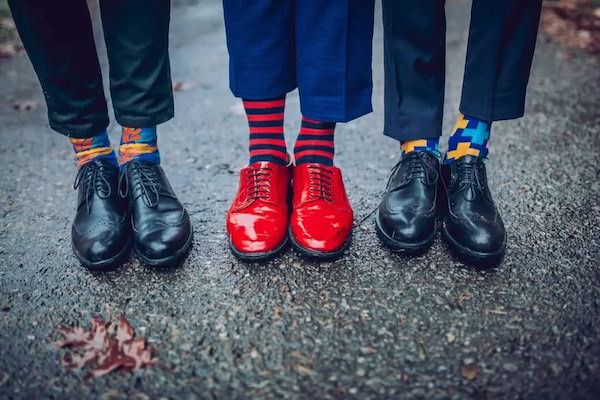
While most often compression socks come in unisex varieties, you can also find styles that are specific to men. With the wider shape, men’s socks provide a little extra room where you need it. ComproGear’s 20-30 mmHg advertise compression socks that come in a variety of patterns from bold to basic so you can find the one that’s right for your personality.
For Runners

Whether for an athletic team, jump rope routine or just for your own health and enjoyment, your level of exercise may determine the best compression socks for you. For runners, compression socks can bring benefits to improve the flow of oxygen throughout your body. Athletes have also praised these socks for reducing swelling during recovery and alleviating sore muscles.
Compression socks can be worn either during your run or after your run as a post-workout recovery technique. Either way, the improved blood circulation through your calves and muscles on your lower legs is good for your health – it can help you run better and feel stronger and less sore. A key to a good pair of compression socks for running is the wicking material to reduce the amount of moisture that accumulates as you sweat. This list from Runners World shares some additional great options to explore.
For Standing All Day
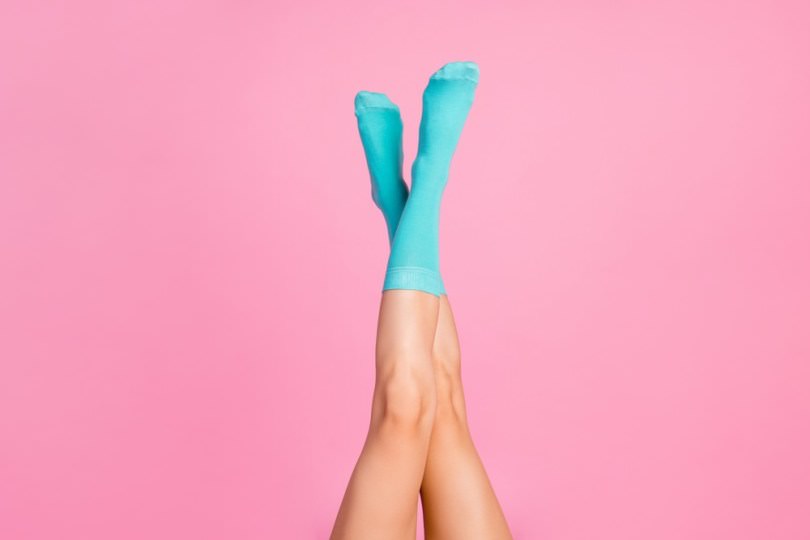
If you’re finding yourself standing all day for work or fulfilling other responsibilities, a compression sock with a mild to medium level of pressure can be highly beneficial. Depending on your level of soreness as well as your potential for developing other vein-related issues, you can find a simple, every day wear pair that provides you relief.
Occupations like nurses, or retail and restaurant workers may find compression socks helpful as they spend their days – and potentially nights – on their feet and walking around. Depending on the amount of pain and concern for developing vein-related issues, you may need to increase from a medium level to a firm pair worn strategically.

The world has a lot to offer in terms of comfort and to relieve pain. Whether you’re looking for a pair to wear while you run or recover from a workout or if you’re looking to find some relief from your ongoing varicose veins pain, there’s a couple that is highly recommended for you.
The best ones are something that’s unique to you. With the diverse range of patterns, colors, pressure levels, fabrics and other features that may interest you, you have the power to choose. Use these helpful guides to determine which kind should be on your top list and pick up a match that’s within your budget today.
This page last updated January 3, 2022
